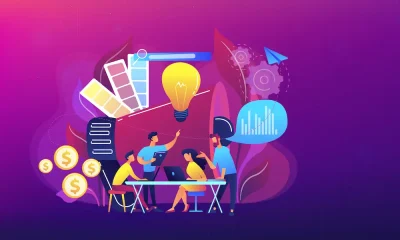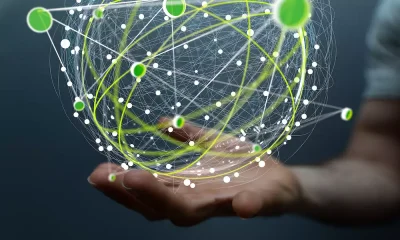Technology
Best Web Design Trends For Business Websites

What are the best web design trends today? To find out we go back to 1995 and 1998, respectively when Javascript and CSS revolutionized the internet.
When the internet was born, it was all plain code, and it didn’t change for the better part of the 90s. The internet was not a design spectacle like how it is now. It was cool but wasn’t necessarily beautiful.
Within 20 years, this space has grown considerably. Now, a website needs to do more than just look good. It needs to be quick and responsive, particularly on mobile devices.
In the current scenario, Javascript and CSS still plays a big role in web design.
Attractive With Great Performance
But what makes a website not only look good but perform well, too, in 2023?
Several actions can be taken to improve website design, including
Prioritizing user experience
User experience (UX) should be the primary focus when designing a website. The design should be intuitive, easy to navigate, and visually appealing. Use user testing and analytics to gather feedback and optimize the design accordingly.
Implementing responsive design
With the increasing use of mobile devices to access the internet, ensuring your website is optimized for various screen sizes is crucial. Implement responsive design techniques to create a consistent experience across all devices.
Using bold and large typography
Typography plays a significant role in web design. Using bold, eye-catching typography can help grab the user’s attention and create a strong visual hierarchy on the page.
Many web designers have started doing what they’ve always wanted to do. Big typography. Before, images were at the forefront, and text was sidelined. Now, typography has become the frontrunner in web design.
Using large text to explain services and offerings has become the norm and will continue to grow through 2023.
Incorporating video
Video content will continue to be essential to website design in 2023. Incorporating video can help to convey a message more effectively than text alone and can help to keep users engaged on the page.
Leveraging AI
Artificial intelligence (AI) can be used to personalize the user experience, such as recommending products or services based on their previous behavior. It can also optimize website design by analyzing user behavior and making recommendations based on that data.
Focusing on accessibility
Making your website accessible to all users is critical in 2023. This includes optimizing for screen readers, incorporating alt text for images, and ensuring that the design is easy to navigate for users with disabilities.
Incorporating interactive elements
Interactive elements, such as animations, micro-interactions, and chatbots, can help to create a more engaging user experience and keep users on the page longer.
Using minimalistic design
Minimalistic design is a trend that has been growing in popularity in recent years. This approach focuses on simplicity, using only the essential elements needed to convey a message. It can help to create a clean and uncluttered design that is easy for users to navigate. With lots of white space, optimized images, and little text will achieve a minimalistic design.
Particle Backgrounds
Particle backgrounds have been around for a few years. They look incredibly modern, they are easy to execute, and they are interactive.
Plus, particle backgrounds are also lightweight, which means they don’t increase the loading time of a website. They also give a feeling of motion, which is key in modern web design. There are GitHub repositories such as this that help with creating easy particle backgrounds.
Animations
When you hear the word animation, you are immediately transported back to the flash animation that annoyed users with their slow loading speeds due to subpar internet speeds.
Animation has also changed and has become a massive trend. Due to better internet speeds, they load faster and hook the user to the website in a world of dwindling attention spans.
What makes animations tick is it keeps the user on the website long enough for them to explore the site instead of them just bouncing off in a matter of seconds.
Custom Illustrations
Stock images were a constant in web design. It still is. But many web designers use custom illustrations to make their point and separate themselves from the rest of the crowd.
The best part about illustrations is your identity is created, and you immediately stand apart. See illustrations used by Ahrefs and WPBeginner for their blog posts. The colors they’ve used, the style, and even the characters are similar.
Using custom illustrations can be fun and make your website look different from the old drab, stock image-based websites.
Responsive logos
The responsive trend was at the forefront about five to six years back. Websites rendered on mobile devices were a huge thing.
Responsive has become the norm now. But it’s been taken to the next level, where companies are compromising the design of their logos just to be responsive. Companies are reducing the size of their logos and creating mnemonics just to be mobile-responsive. This is a trend that must be adopted by all brands.
E-commerce Product Shots
E-commerce sites have started using a certain style for showcasing their products, that have become a trend. Compared to having a plain background and showing the products, e-commerce stores use pastel colors with single-item shots to make the product stand out.
This gives it a sleek finish and makes each product stand out.
Final Thoughts
Trends keep changing, and it’s up to designers and developers to adopt new styles. Modern-day web design trends also consider the effect of design on conversion numbers like traffic, revenue, etc. A good trend will improve numbers and, at worst, does not affect performance. But a bad trend will affect numbers, which web designers need to keep in mind.









